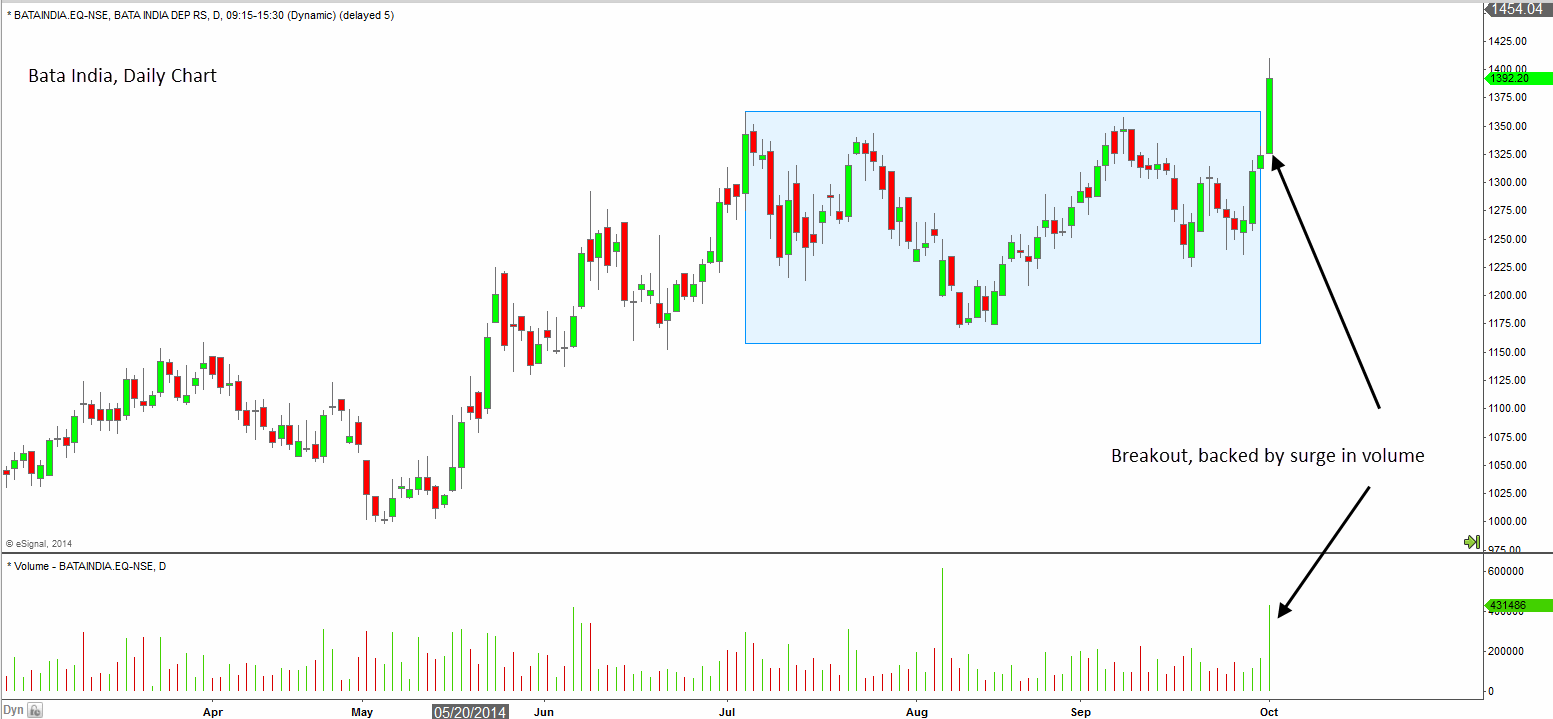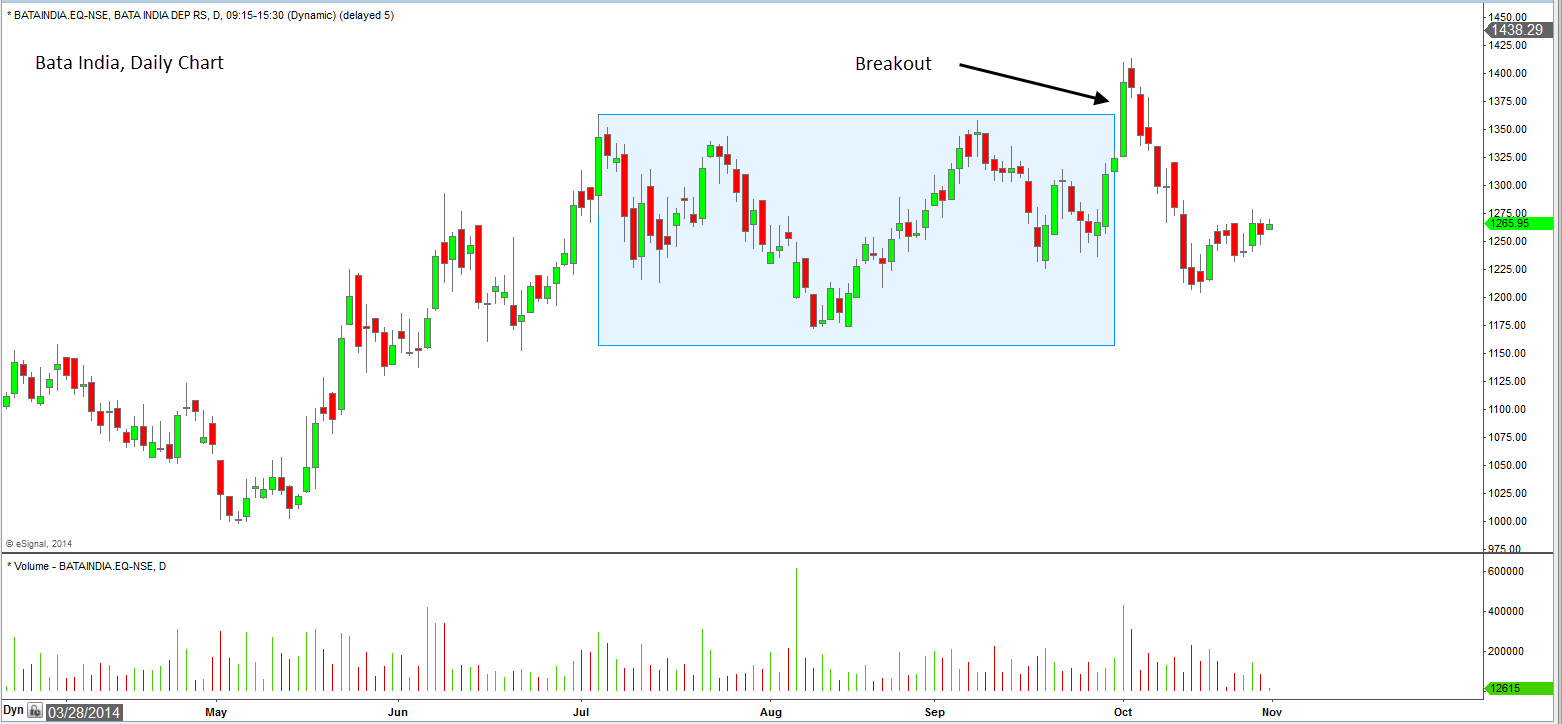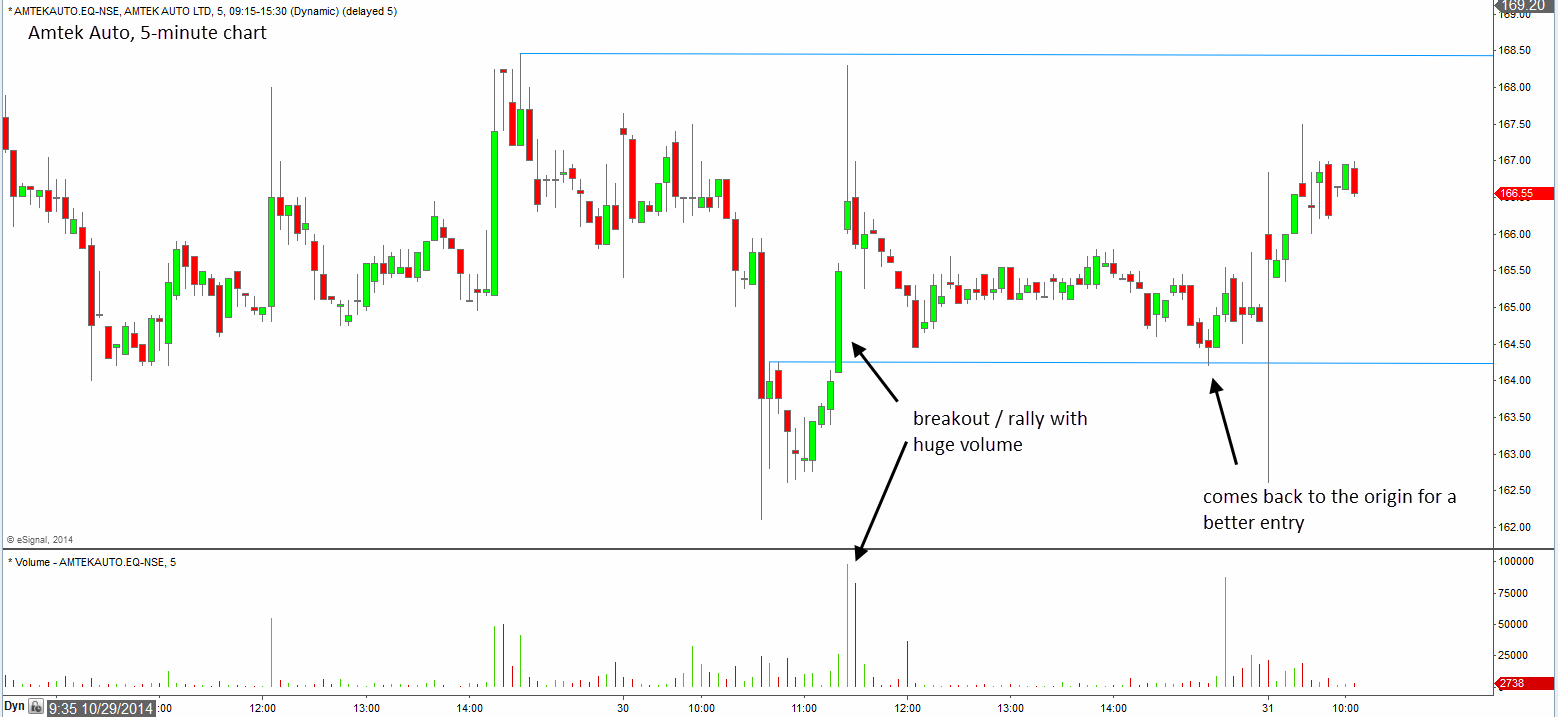It is common knowledge that stock price movement is governed by demand and supply for the stock concerned. For a stock to move up, demand should over-weigh supply and vice-versa. Whenever we see a big move in price, investors end up chasing the stock thinking that price is going to run away to the moon if this buying opportunity is missed! And what typically happens thereafter is that the stock falls immediately and investors are left pondering ” Why is it that whatever I buy falls”.
What typically happens is that pro-money (generic term for operators / FIIs/ hedge funds and anyone else having enough money power) use this instinct of traders / investors by throwing a bait in the form of a breakout. After the breakout, price retraces or gets into a sideways mode testing the patience of breakout traders. Finally when the breakout traders throw in the towel, the next move starts. And, breakout traders jump in again and the cycle continues !!
Let us look a few examples. The chart below is that of Bata India. The chart has been rolled back to the breakout date – October 1, 2014.

It is apparent from the above chart that the price broke out of a nice consolidation and as text books would say, the breakout was backed by increased volumes as well. Logical conclusion: Buy now, lest you miss on the move. Let us see what happens to price after the breakout. Look at the updated chart of Bata India featured below.

Price retraces all the way back to the origin of the move. This concept plays out across all time frames and investors need to desist chasing price. One more example in 5 minute chart of Amtek Auto. The price action highlighted in the chart relates to yesterday (October 30, 2014).

The point we are driving home is price fluctuates and there is no need to chase price. Wait for a pull back and price will often offer a nice entry opportunity. There would always be instances where breakouts are genuine and price runs away without offering a secondary opportunity but, those are minority instances.
For those academically oriented, take a look at Bharat Forge, TVS Motors, Jain Irrigation, Arvind. Let’s know what you can glean from those charts.








Thanks. But, How to analyse the chart correctly /in the proper manner? Please elaborate / educate those who are not so familiar with the interpretation of the charts ?
Hi, Ganesan!
We analyse when to buy a stock based on the patterns of its price behaviour. When the stock price moves above its previous highs (it could be weekly high, monthly high, or even lifetime high), we term it as a positive breakout. Next, we analyse if the volumes support the price breakout. If the volumes are also high, then we declare a positive breakout in price. In the chart in this post, the price broke out from a consolidation period. Also, the breakout was supported by higher volumes. It is important to be cautious here because sometimes, the breakout can be a false signal. While speculative traders buy stocks as soon as they spot breakouts, long term investors can wait for the pattern to complete, i.e., when the stock gives a true buy signal.
Thanks.
Thanks. But, How to analyse the chart correctly /in the proper manner? Please elaborate / educate those who are not so familiar with the interpretation of the charts ?
Hi, Ganesan!
We analyse when to buy a stock based on the patterns of its price behaviour. When the stock price moves above its previous highs (it could be weekly high, monthly high, or even lifetime high), we term it as a positive breakout. Next, we analyse if the volumes support the price breakout. If the volumes are also high, then we declare a positive breakout in price. In the chart in this post, the price broke out from a consolidation period. Also, the breakout was supported by higher volumes. It is important to be cautious here because sometimes, the breakout can be a false signal. While speculative traders buy stocks as soon as they spot breakouts, long term investors can wait for the pattern to complete, i.e., when the stock gives a true buy signal.
Thanks.